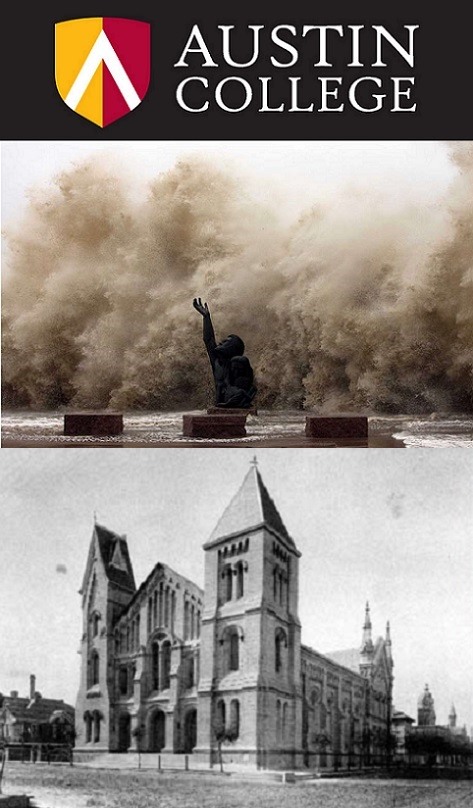
The Austin College campus dates back to 1876, when President Luckett chose Sherman, TX as the school’s new home. Sherman, however, is not the Texas birthplace of AC.
The school was founded in Huntsville, TX in 1849. But really, even Huntsville is not the location where Austin College was born.
Maybe Austin, TX? When the state legislature approved AC’s charter in early 1849? Not really. Perhaps Independence, TX, when the Presbytery of the Brazos approved of the creation of Austin College in 1845? Not even then.
The real birthplace of Austin College occurred in Galveston.
Daniel Baker’s missionary zeal took him by boat from the East Coast to Galveston by way of New Orleans. He disembarked in this new city in February 1840, just one year after its founding. He was amazed by what he saw.
From “The Life and labours of the Reverend Daniel Baker,” by William M. Baker:
“Coming in view of Galveston Island, February 26th, 1840, I was surprised to see the island so low and flat, like a chip floating on the surface of the water. Galveston is a very flourishing town. Two years ago, there were not more than perhaps three houses; there are now, it may be, three hundred. Galveston is, no doubt, destined to be a very important commercial seaport. Strangers are coming into Texas in great crowds, so that the population, it is supposed, already exceeds one hundred thousand souls.”
“We have, from the house in which I lodge, a very extensive view of the ocean or gulf, and the roaring of the surf seems everlasting. I took a long stroll upon the beach shortly after my arrival. I supposed I walked four miles upon the hard white sand, and would occasionally put my foot in the foam of the salt wave.”
From “Austin College: A Sesquicentennial History,” by Dr. Light Cummins:
“Although Daniel Baker probably did not arrive in Texas with the idea of founding a college, he soon met various individuals who would eventually be active with him in establishing Austin College. He met the Reverend John McCullough at Galveston and assisted him in holding Sunday services.”
Baker returned to Galveston a second time in 1844, when he and McCullough devoted more of their energies to the establishment of AC by the Presbytery of the Brazos. From “A Sesquicentennial History:”
“Although little was done in this regard during 1844, the next meeting of the Presbytery saw the appointment of a special committee to draft a ‘charter and general plan for a literary institution, to be under the care of this Presbytery.’ The Reverend John McCullough, as committee chair, was appointed as an agent to secure funds for the creation of such a school.”
Daniel Baker’s arrival in Galveston in February 1840 was fortuitous. Just a month earlier, Reverend John McCullough had established the First Presbyterian Church in Galveston. The cornerstone of the church was laid on January 1, 1840 on the corner Church and 19th Street. Both men would become founding fathers of Austin College later in the decade.
Nearly 180 years since that cornerstone was first laid, First Presbyterian Church of Galveston still calls that street corner home.
Former Austin College Trustee Lee Dean Ardell has strong ties to First Presbyterian. Ardell has a home on the island, and can often be found in its pews. Years ago, Ardell posted a picture online from inside First Presbyterian with a message:
“Back in the sanctuary of First Presbyterian Galveston for the first time since Hurricane Ike!”
The story of First Presbyterian Church began with two AC founders in the 19th century and continues today through a former AC Trustee who celebrated its recovery from a hurricane in the 21st. The Galveston Roo Tale to come around Labor Day shares many of these elements. It’s the story of an Austin College family from Galveston associated with First Presbyterian. The father, a former AC Trustee, and his son, a recent AC graduate, had the misfortune to find themselves at home on September 8, 1900. That day, the infamous Galveston hurricane of 1900 arrived.
The 1900 Great Storm remains the worst natural disaster in American history. Up to 12,000 lost their lives in the storm, as 90% of the city was washed away. This Kangaroo family, however, survived to tell their story. Their house, although flooded and badly damaged, survived intact. Its survival is due entirely to its location in the current Galveston historical district.
The Galveston historical district is so named because this small patch of land was one of the few areas in Galveston to avoid the totality of the 1900 storm’s wrath. The Austin College family which survived the Great Storm could have chosen to live east near Lucas Terrace, west near St. Mary’s Orphanage, or south near the beach. Homes in these areas were completely washed away. One who did choose to live south near the beach was Isaac Cline, made famous by the book “Isaac’s Storm” by Erik Larson. Cline survived, but just barely; members of his family did not.
This particular Austin College family was lucky, primarily because of their residence in the now historic district. The decision to live there was due to the home’s proximity to the First Presbyterian Church, which itself was damaged but survived the storm. The church, an intimate part of that family’s livelihood, literally saved the lives of the family. Their story will be told around Labor Day.
Where was Austin College born? If you had to pick a place, you might as well pick the First Presbyterian Church of Galveston. I know this Austin College family in 1900 certainly would. Their story is the next Roo Tale.
It’s called: “1900: Austin College, & the Greatest Natural Disaster in American History.”
More Saturday Galveston Previews to come.
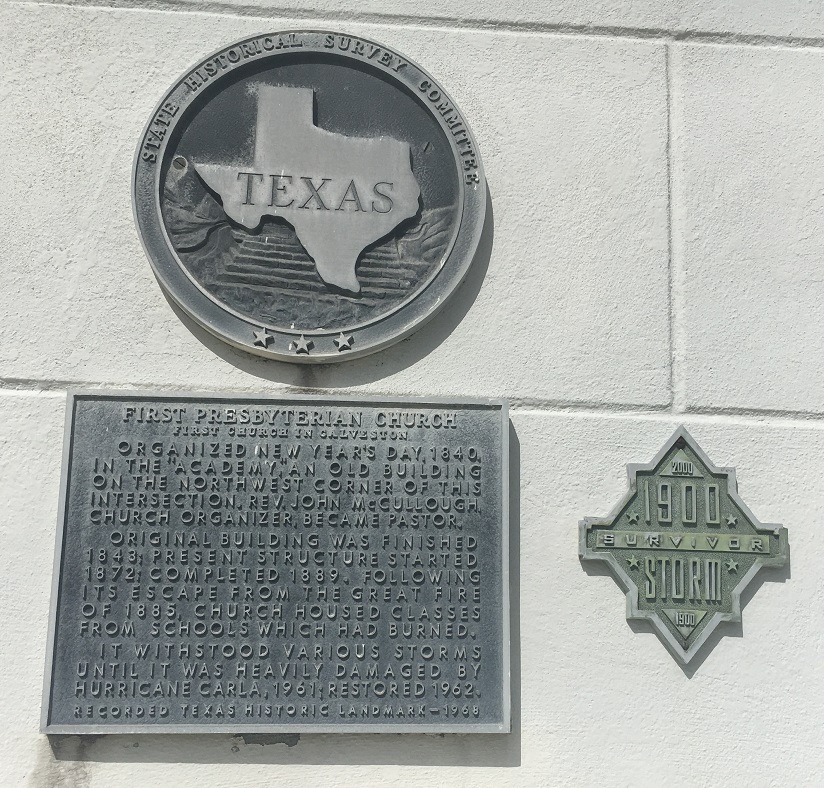
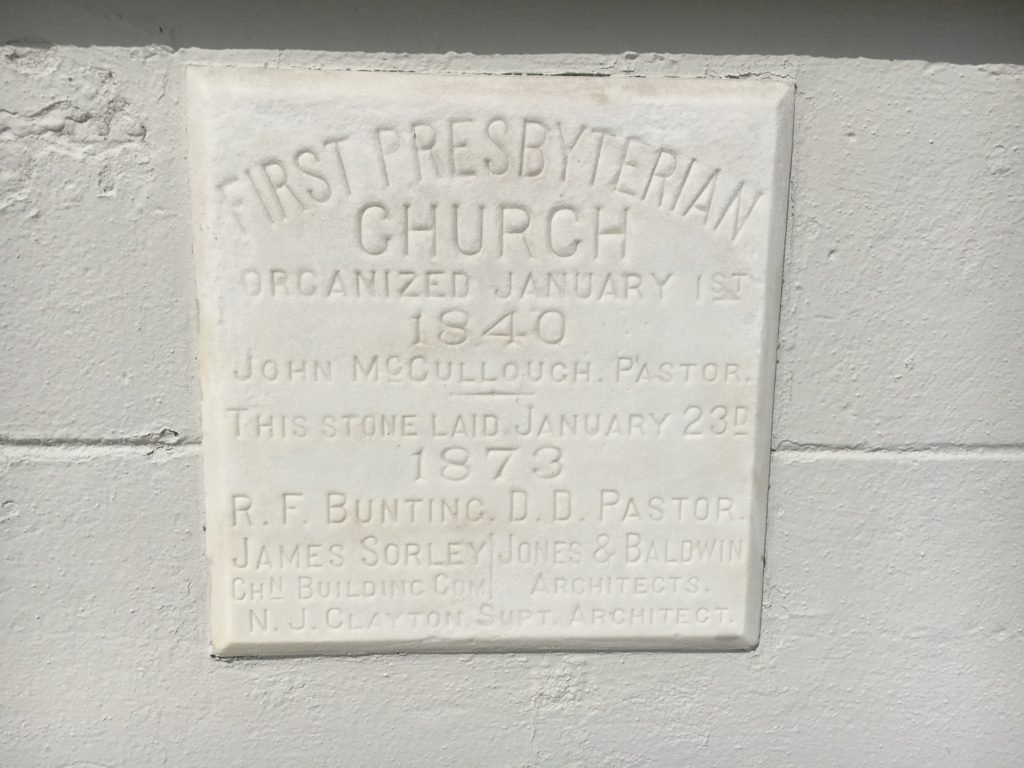
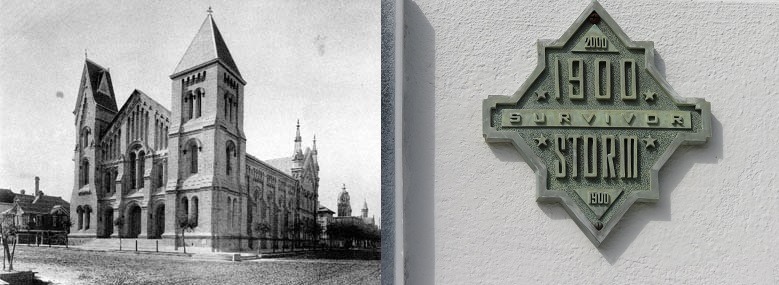
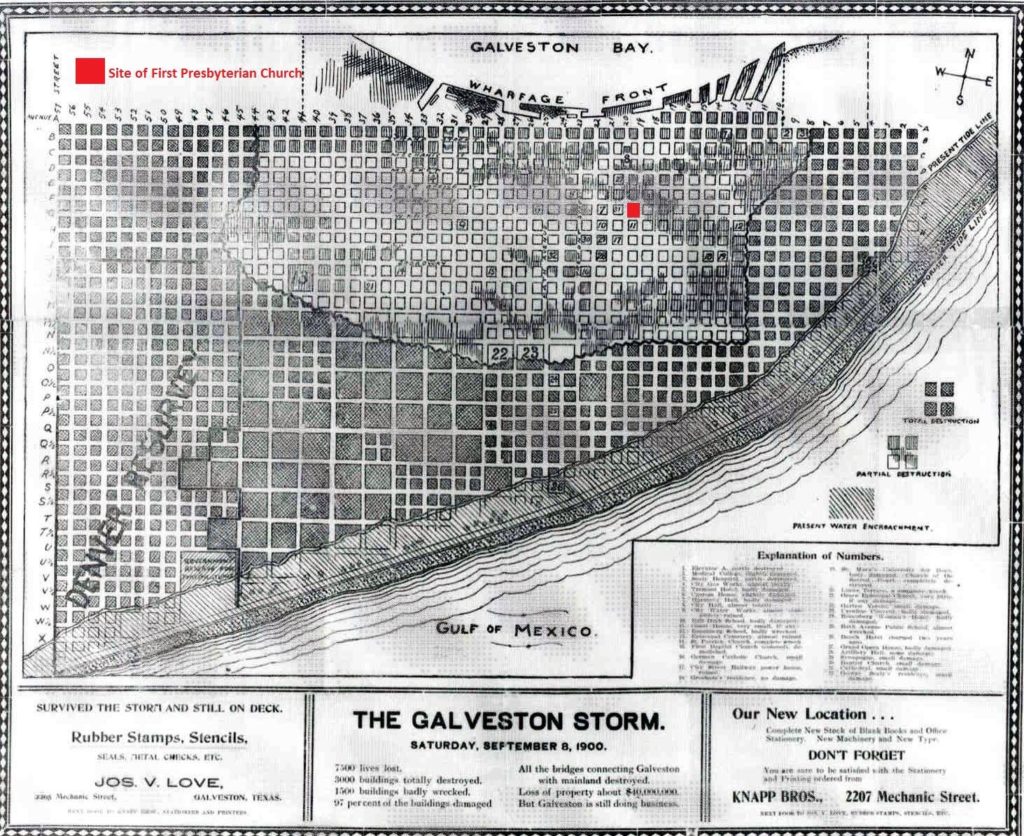
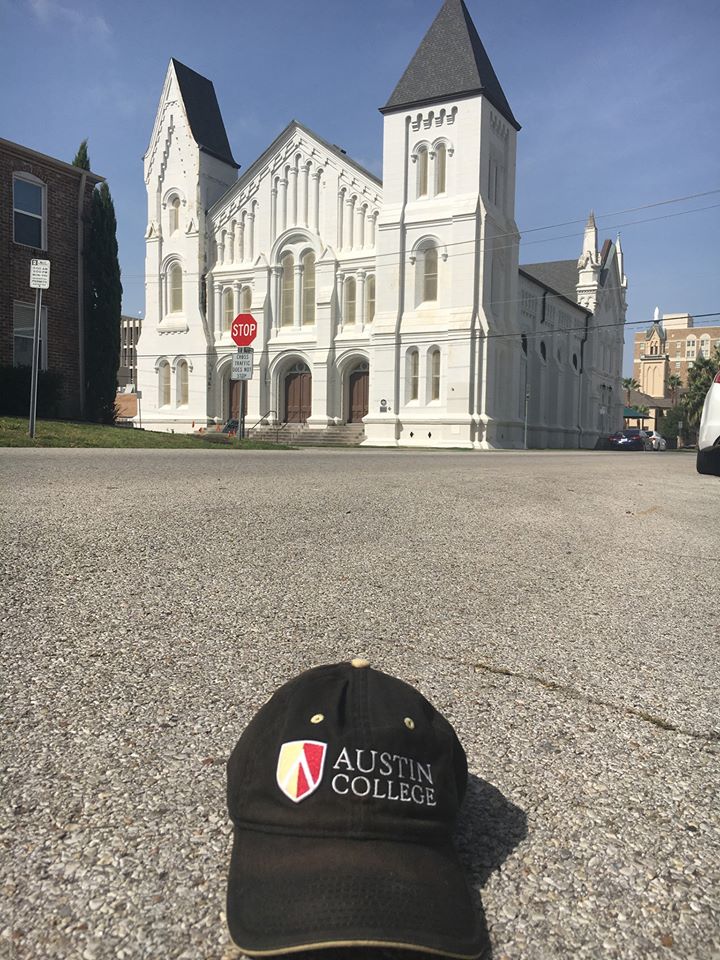
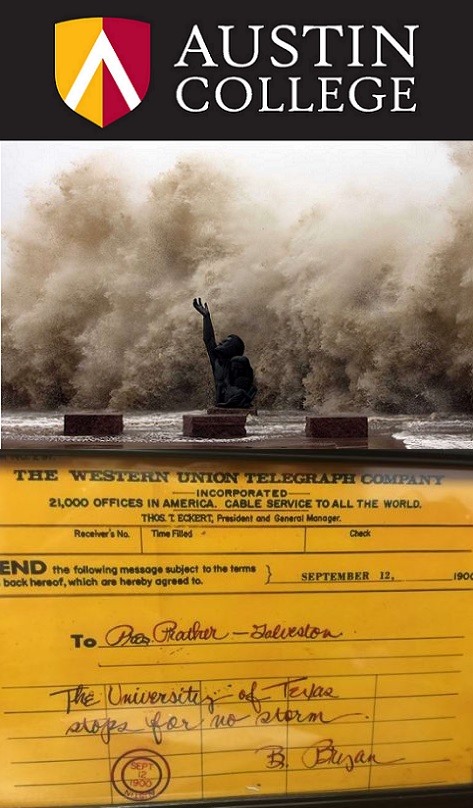
119 years later, the 1900 Galveston hurricane remains the most deadly natural disaster in American history. Unaware of the approaching storm, the city suffered a direct hit on the evening of September 8, 1900. Fatality estimates range as high as 12,000 souls. That’s four times the number of Americans who perished in Hurricane Maria in 2018. 90% of the city was wiped away clean, while the remaining 10% suffered significant damage.
The University of Texas System is comprised of 15 member institutions; I’ve called UT System my place of employment for two decades now. Back in 1900, the System included only two schools: the flagship campus in Austin & the Medical Branch in Galveston (UTMB). Ashbel Smith Hall (Old Red) on the UTMB campus survived the 1900 storm, but just barely. Damage was so extensive that UT Austin President William Lambdin Prather telegrammed the UT System Board of Regents on behalf of UTMB. Prather mentioned that the medical school might need to cancel the entire 1900-01 academic year.
The telegram reply from UT Board of Regent Chair Beauregard Bryan has since become a legendary rallying cry, both at the University of Texas and around the state:
“The University of Texas stops for no storm.”
The 1900-01 academic year at UTMB concluded on schedule.
President Prather was a true Longhorn. His passion for UT gave the school its famous song, “The Eyes of Texas.” Prather was a supporter of Longhorn athletics, and may have been at Clark Field on April 26, 1900 when UT defeated Austin College in baseball. On that date, the Roos became just the fourth collegiate opponent to square off against the Horns in Austin. For more on Prather, check out Jim Nicar’s amazing site UT History Corner. In the comments.
Chairman Bryan had strong Austin College ties. His father Moses Bryan was a personal secretary to AC’s namesake Stephen F. Austin. An uncle, William Joel Bryan, had settled near the Brazos as a part of Austin’s original colony; the city of Bryan, TX is named for him. A second uncle, Guy Morrison Bryan, was an early Austin College Trustee who moved to Galveston in the 1860s. And that’s where the stained glass comes in.
A stained glass window of Stephen F. Austin sits in the first floor lobby of the AC Administration building. It’s a miracle it is there. The window was commissioned at the turn of the century by Guy Morrison Bryan, Jr., the son of an AC Trustee and a cousin of UT Chairman Beauregard Bryan. By good fortune, the window was not housed in the original Old Main which burned to the ground in 1913. During the lean years of the Great Depression, it was privately sold. However, through a bit of luck, future AC Trustee A.M. Pate stumbled upon it 40 years later. Pate purchased the window, and was convinced to gift it back to the school. I may need to pay a visit the next time I’m on campus.
UT Chairman Bryan’s grandmother was Emily Austin Perry, the sister of Stephen F. Austin. No other AC benefactor was as crucial to the early success of Austin College as Ms. Perry. She came from a Presbyterian family, and gave AC founder Daniel Baker a warm welcome when he visited the family homestead along the Brazos river. Perry made a donation, promised 1500 acres, and established a 150-year family relationship with the school. Baker chose to name the school after her brother in part because of Emily Austin Perry’s generosity.
Ashbel Smith Hall (“Old Red”) was repaired after the 1900 storm, and is currently in use today. Smith, a former UT regent himself and a doctor intimately involved in the establishment of the medical school in Galveston, is something of a University of Texas legend himself. He was also the commencement speaker at Austin College’s first graduation in 1853.
The ties between Austin College and the University of Texas are strong. They can be traced from a famous UT telegram about the great 1900 storm all the way back to Daniel Baker, the “Father of Austin College”, and Stephen F. Austin, the “Father of Texas” himself.
There are also AC ties to the 1900 storm itself. A former Austin College Trustee and his Austin College alumni son (Class of ’00) were in Galveston on September 8, 1900. They rode out the storm, barely escaped with their lives, and lived to tell the tale. It’s their story which is the next Roo Tale.
It’s called: “1900: Austin College, & the Greatest Natural Disaster in American History.”
This summer, it’s all about Galveston! More Saturday Galveston Previews to come. The Galveston Roo Tale will be told on or around Labor Day.
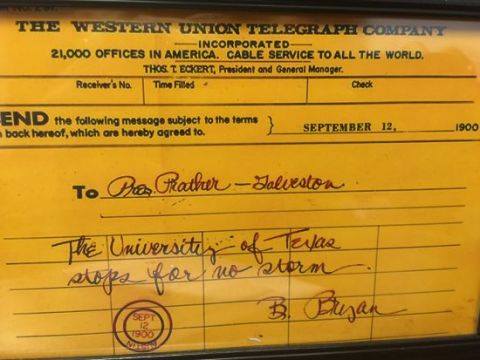
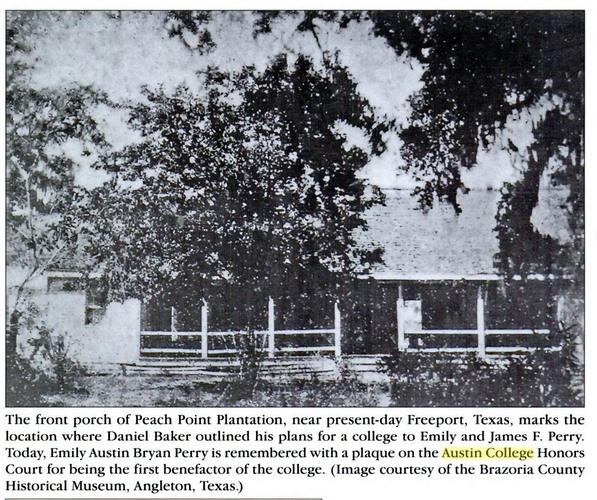
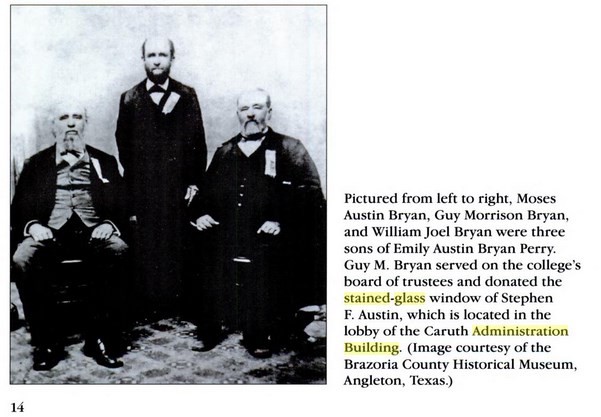
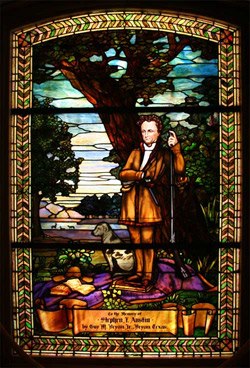
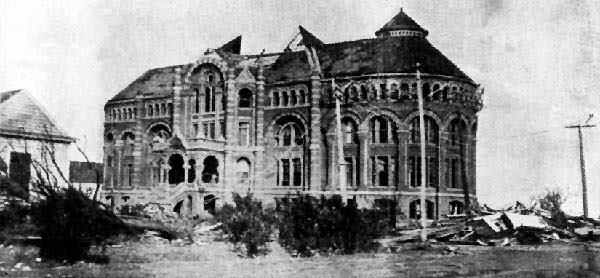
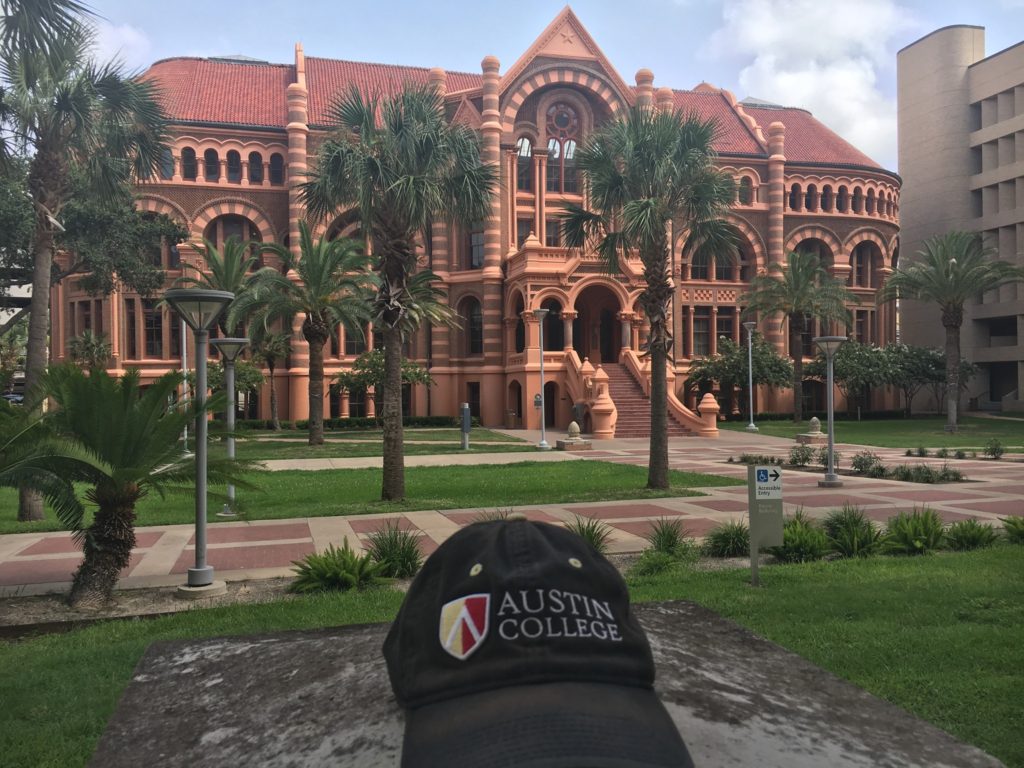
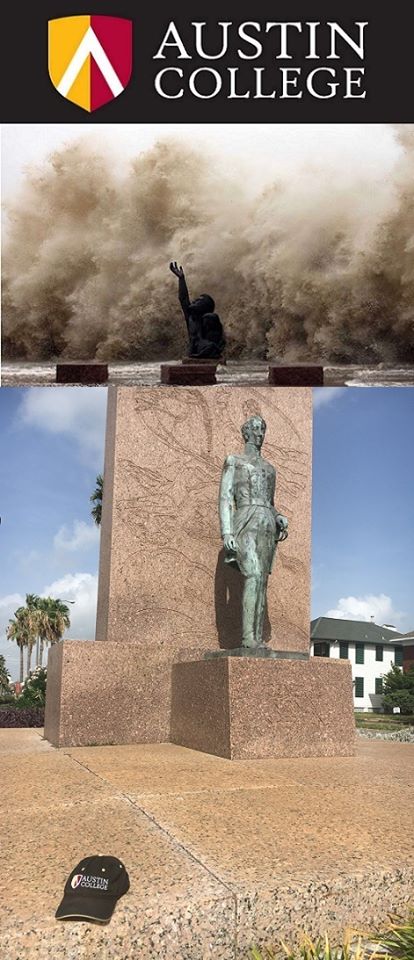
Sidney became an orphan at age 12.
The Marlboro, Massachusetts native, one of ten children, had already endured a difficult childhood from the time of his birth in 1805. After the loss of his parents in 1817, the 12-year-old moved to Boston. By sixteen, he was a clerk in a Boston mercantile house. Industriousness slowly allowed him and his siblings to move out of poverty. Opportunity in New York, Ohio, and Kentucky soon followed. By 1835, Sidney was a prosperous and comfortable family man. But a calling awaited.
The plight of the Anglo Texians under the rule of Santa Anna motivated Sidney to organize a company. In late 1835, 52 volunteers under his leadership were recruited for the trip from Kentucky to Texas. Upon arrival, future Austin College Trustee Sam Houston made Sidney a lieutenant colonel; he was later promoted to colonel. On April 21, 1836, he commanded a wing of Houston’s Texas Army at San Jacinto. His command at the victorious engagement is credited with the battle cry of “Remember the Alamo.”
Sidney served in the Congress of the new Republic after independence. Following Texas annexation by the U.S., he retired to a new home:
Galveston.
For nearly 30 years, Sidney called Galveston home. He owned and operated the profitable Island City Hotel in Galveston. Built in 1850, the Island City Hotel was located on the corner of 19th and Avenue H. It sat just one block from the First Presbyterian Church (19th and Church), established by Austin College founders John McCullough and Daniel Baker. Until his passing in 1873, Sidney was a prominent resident of the city; he’s buried in Lakeview Cemetery on Galveston island.
The Island City Hotel was a victim of the Great Galveston fire of 1885; so was much of the town from the Strand to the Beach. Miraculously, even though it was just a block away, the First Presbyterian Church survived the fire. The church survived again 15 years later when Galveston, TX was hit hard by the Great Storm of 1900. The location of the church ensured occupants would live to tell their story. That section of Galveston was part of the 10% of the city that would be flooded & damaged, but thankfully alive.
The next Roo Tale will be told around Labor Day. It’s the story of the family of a former Austin College Trustee that survived the Great Storm, in part because of that family’s proximity to both the First Presbyterian Church and Sidney’s Island City Hotel. Location was the difference between death and survival; 19th street north of Broadway was the best place to be when the storm arrived on September 8, 1900. Fortunately, this Austin College family was at the right place at the right time.
The old Texas Highway 75 used to run south from the Red River all the way to Galveston. It cut through Sherman, TX, the present home of Austin College. It passed through Dallas, Corsicana, and points south. It snaked through Huntsville, TX, the original home of AC. It made its way through Houston, TX, before finally arriving in Galveston. Once in Galveston, TX Hwy 75 turned into Broadway. There, it crossed a little bit of Galveston history street by street. 69th street, the access to West Galveston beaches. 43rd street and the historic Broadway cemetery. 27th street, home of the Moody Mansion. 24th street, the location of Juneteenth’s Ashton Villa. 14th street, the site of Sacred Heart Catholic Church.
The end of Broadway is the end of the road and the beginning of the Gulf of Mexico. It’s also the site of a monument to Sidney, one of Galveston’s most famous residents. A statue of this Texas Revolution hero stands proudly on Broadway facing the sea.
Had the 1900 Austin College family in the next Roo Tale lived near Sidney’s monument at the end of Broadway, their demise would have tragically been certain. The tale is called: “1900: Austin College, & the Greatest Natural Disaster in American History.”
Austin College arrived in Grayson County in the year 1876, in part because the community’s largest town had three decades of relative prosperity under its belt. Just one year after Texas annexation in 1846, the residents of that Grayson County town gathered to vote on a name. They decided on the last name of Sidney, the Texas Revolutionary hero:
Sidney’s last name? Sherman.
This summer, it’s all about Galveston! More Saturday Galveston Previews to come.
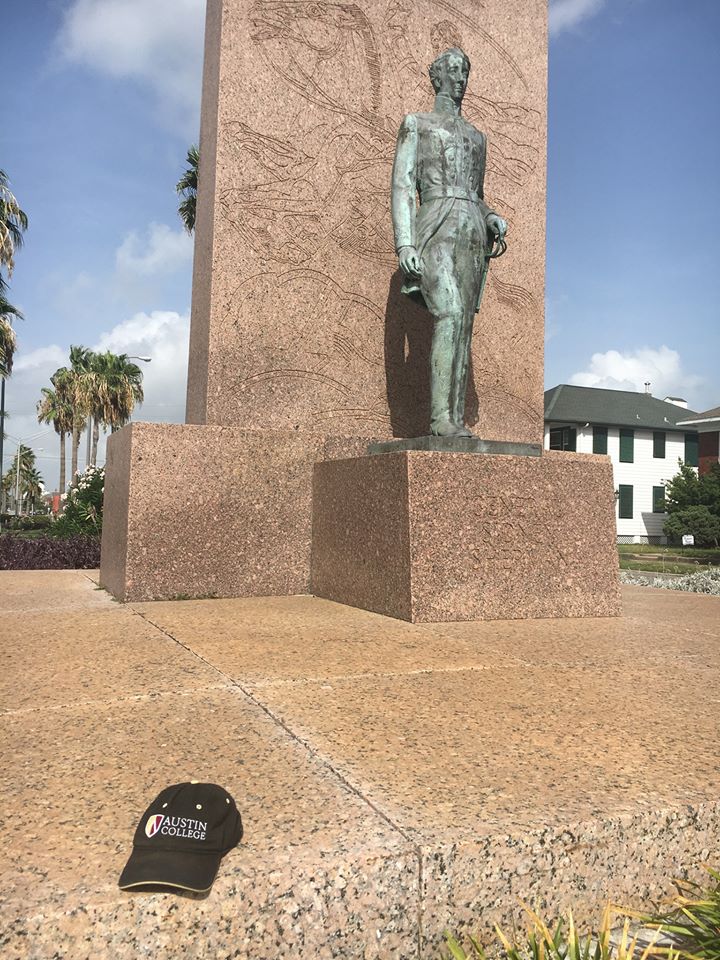
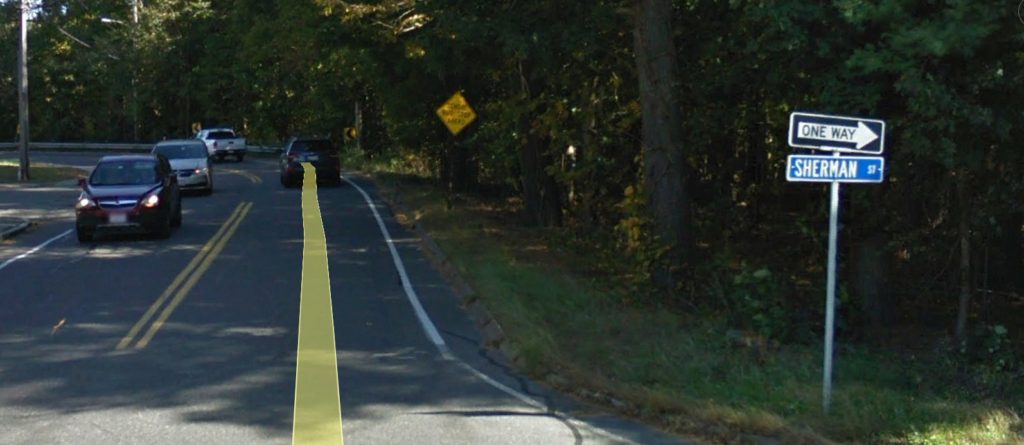
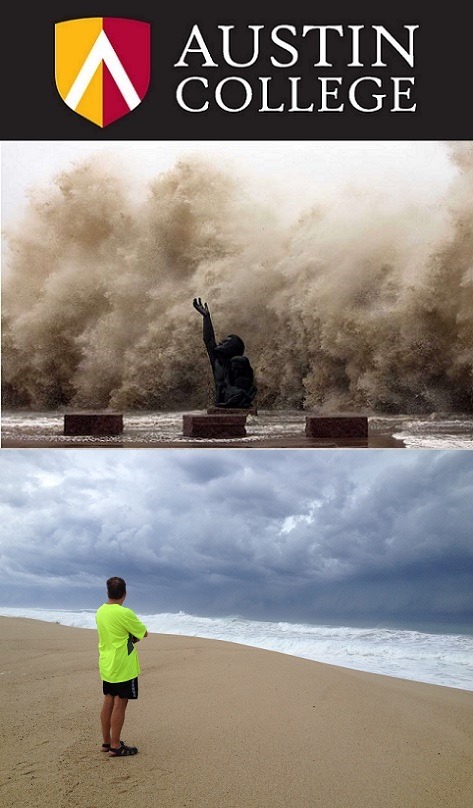
The next Roo Tale is about an Austin College family who rode out the infamous Galveston hurricane of 1900. They were lucky to escape with their lives.
And here’s the crazy part. I know what they went through. I, your humble Roo Tale author, have survived a hurricane.
Dianne and I flew from Austin to Cabo San Lucas on September 13th, 2014 for an overdue vacation. The kiddos stayed with grandparents Linda and Paul. We knew at departure that the weather might be partially affected by a potential hurricane way out in the Pacific. But the hotel staff assured us on arrival: storms in the Pacific never hit Cabo; they always headed west. At worst we’d get a lot of rain and wind. We went to sleep, ready to enjoy some downtime that week.
The next morning we woke up to angst in the hotel. That tropical storm had dramatically strengthened overnight to a Category 3 hurricane. It was projected to get stronger, and was headed straight for the peninsula. It seemed hard to believe, but our vacation was over. We had to prepare for landfall late that evening.
Our Mexican hotel staff was superb, and my Austin College Spanish came in handy. The staff came up with a plan; all hotel guests would be bunkered in the basement of the hotel with plenty of supplies. Mexico is the land of concrete, and the staff correctly assumed that the hotel basement would be a safe haven against wind and debris. But what about the storm surge?
I knew at the time that it’s the surge that gets ya. Storm surge is what contributed to perhaps 10,000 fatalities in 1900 during the Galveston storm, and surge is what nearly took the lives of the Austin College family that survived. We might avoid the debris, but the Pacific was surely going to make its way violently to the basement.
Dianne and I planned to be ready. We located a somewhat enclosed area at higher elevation within the hotel, and we stayed up all night watching a basement stairwell as the hurricane arrived. If the Pacific began to pour down the stairwell like a river, we’d make a run for it and take our chances with debris. We’d only have minutes; once the water reaches waist high, no human can beat it.
We were confident we’d be able to make it to higher ground if we were quick on the draw, but we knew what we would be leaving behind. Hundreds and hundreds of guests who would drown in the surge. Most of the hotel guests were either comfortably unaware of the dangers of surge, or had resigned their fate come what may. Feelings of guilt had to be suppressed if Dianne and I had to run. Like the Poseidon Adventure scene when the water arrives, there was nothing that could be done.
We spent that afternoon on the beach, watching with a mixture of awe and fear. The sky was like nothing I’ll ever see again. One particular photo taken by Dianne shows me staring at the approaching Hurricane Odile; I call it Nature 1, Marc 0. By dusk, we retired to the bunker and the wind began to pick up. By 10pm, it had reached a tremendous intensity. I filmed a bit from our bunker not far from the stairwell we were watching all night (see comments).
The basement bunker began to creak and flood as the hurricane reached peak intensity around 2am. We were wide awake, waiting…..waiting……waiting for the Pacific to knock on our door uninvited.
It never came.
The winds began to die around 4am. It became clear that the worst was over, that we’d live, and that the Pacific had been held at bay. Later, we’d learn that for some unknown reason Odile had not strengthened to a Category 5. Its punch had dropped to a strong Cat 3 / weak Cat 4. That next morning we saw the beach sand all around the pool and at the stairwell doorstep. Even though we were on the dirty side of the storm, the waters had receded just before our basement. We were blessed.
The next morning, Dianne and I walked the streets of Cabo. We saw devastation, looting, and fear. We saw the best in humanity and the worst in humanity. But that’s another story for another day. We had survived a hurricane, and we knew that eventually we’d be back home to tell the story. After 5 days as refugees and 8 hours of wait in the hot desert sun at the Cabo airport, we boarded an evacuation flight headed to the States. We’re grateful. Our Mexican hotel hosts sacrificed considerably to comfort us American refugees when we were in need; if only my own nation were doing likewise today.
The Austin College family in 1900 had it much worse. Although their damaged home in the historical district eventually survived, the family could not have known until later. The surge in 1900 was dramatically worse than Odile’s, and the family had no concrete structure available to escape to higher elevations. As the night of September 8, 1900 wore on, the surge kept coming, creeping closer and closer. They could hear it approaching. And the 1900 storm surge was not the sound of water. What they heard was even more terrifying.
As Erik Larson notes in his book “Isaac’s Storm,” the 1900 storm surge pushed one street of houses upon another, then another, then another. It wasn’t the water that they heard approaching; it was the sound of wood, nails, and brick. The homes of their own Galveston neighbors were accumulating on top of each other, wiping a row of houses off the map and moving on to the next block as an even larger pile of debris. Fortunately for this Austin College family, the growing pile of Galveston housing stopped just three blocks from their house. The waters receded. They were spared.
Dianne and I got lucky. So too this Austin College family.
I have a Florida graduate school friend who described riding out Hurricane Andrew in a bathtub in 1992. She was in Miami, and her family moved south to Homestead to avoid the path. Unfortunately for her, the path of Andrew veered south and headed to Homestead; she would have been better off staying put in Miami. Her fear was tempered by the realization that she was helpless and that her fate was not in her own hands.
Dianne and I understand that feeling better after Odile, and I’m sure the Austin College family of this 1900 Roo Tale understood as well. We are at the mercy of the incredible forces of nature.
On and on the rain will fall, how fragile we are. How fragile we are.
This summer, it’s all about Galveston! More weekend Galveston Previews to come. The Galveston Roo Tale itself will be told some time after Labor Day.
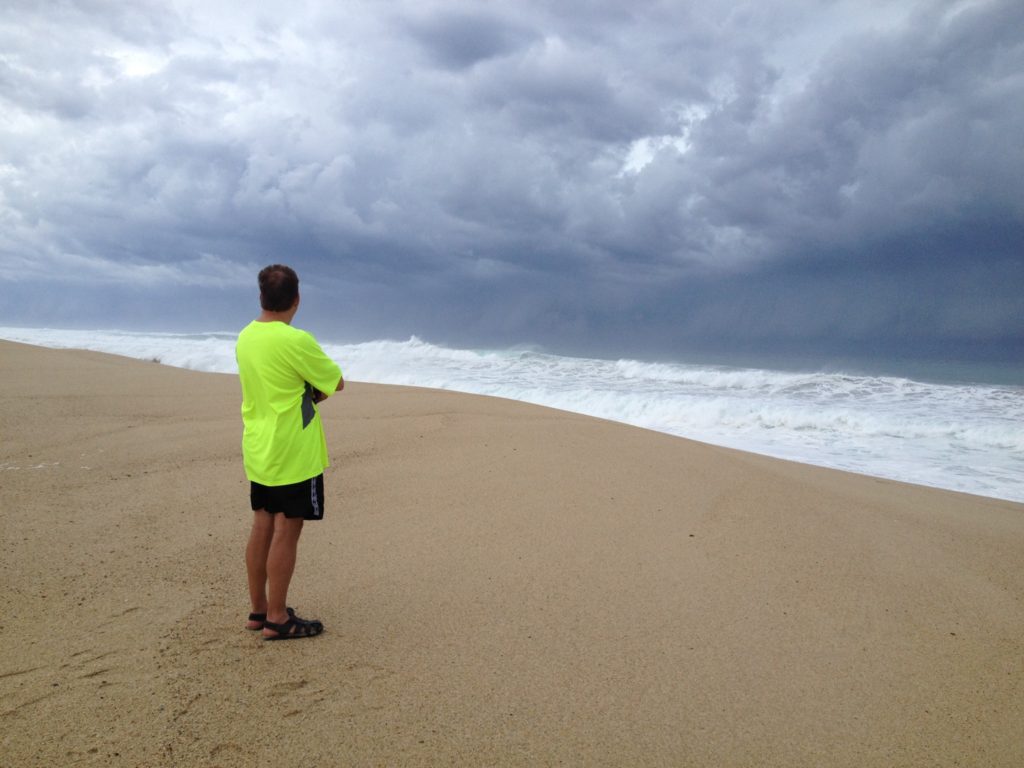
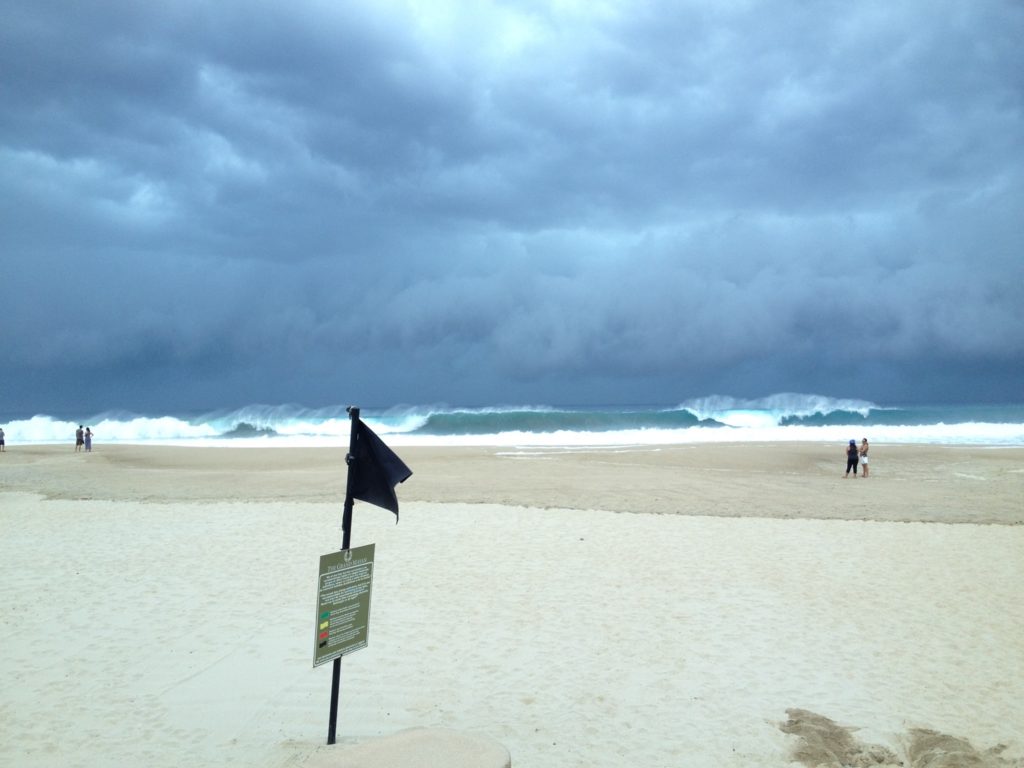
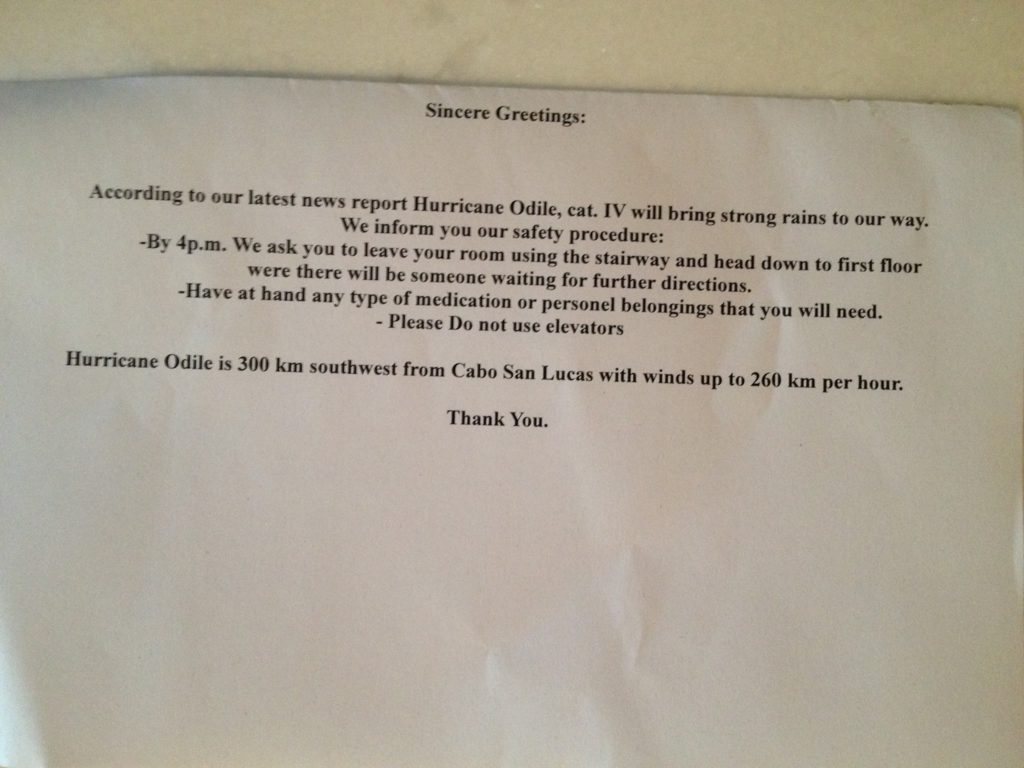
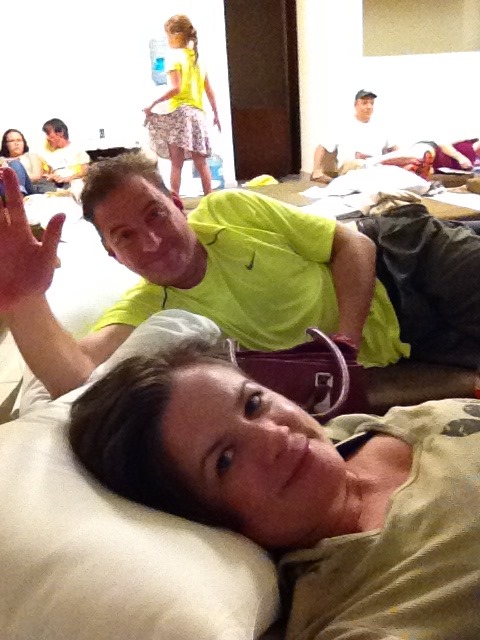
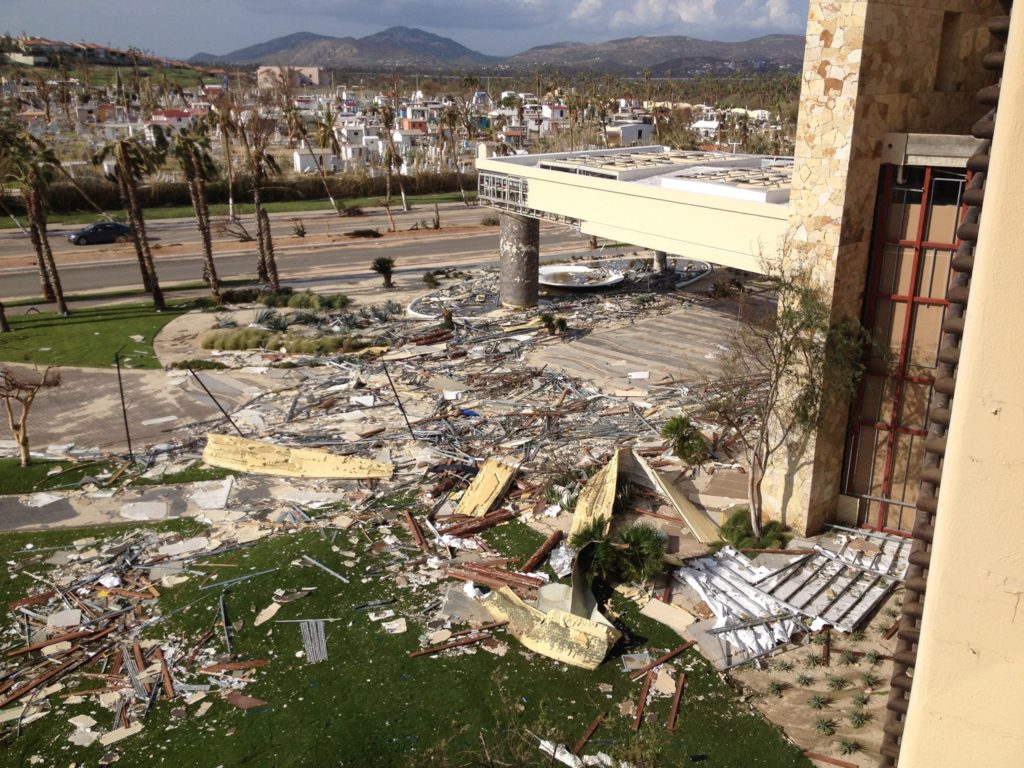
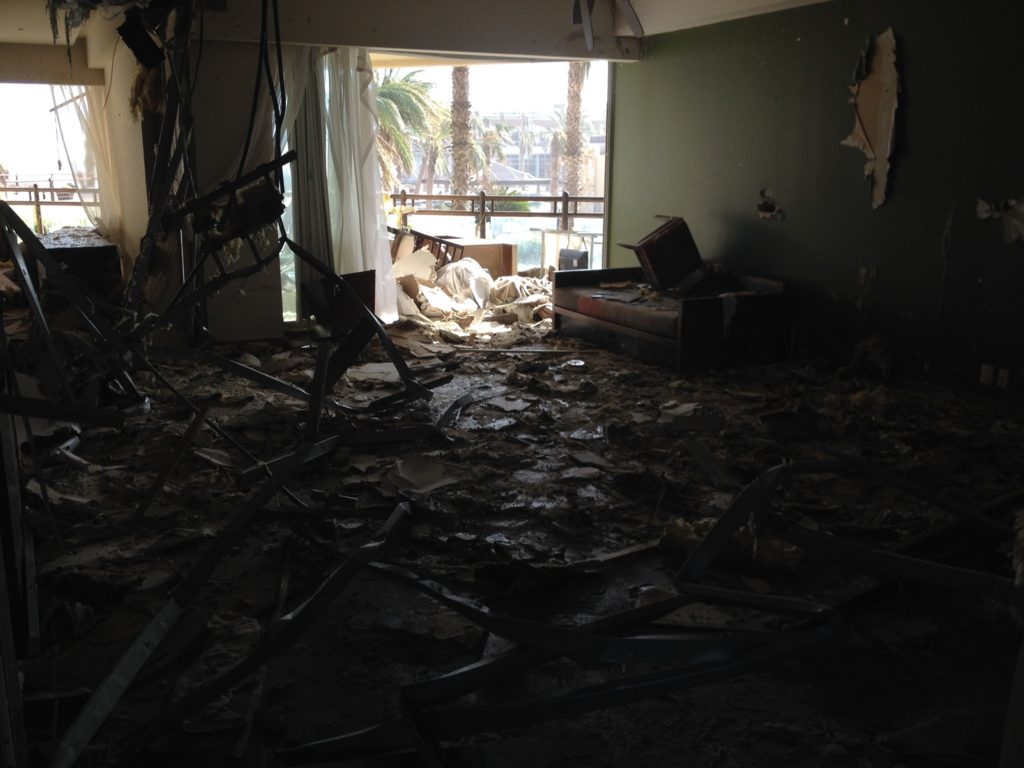
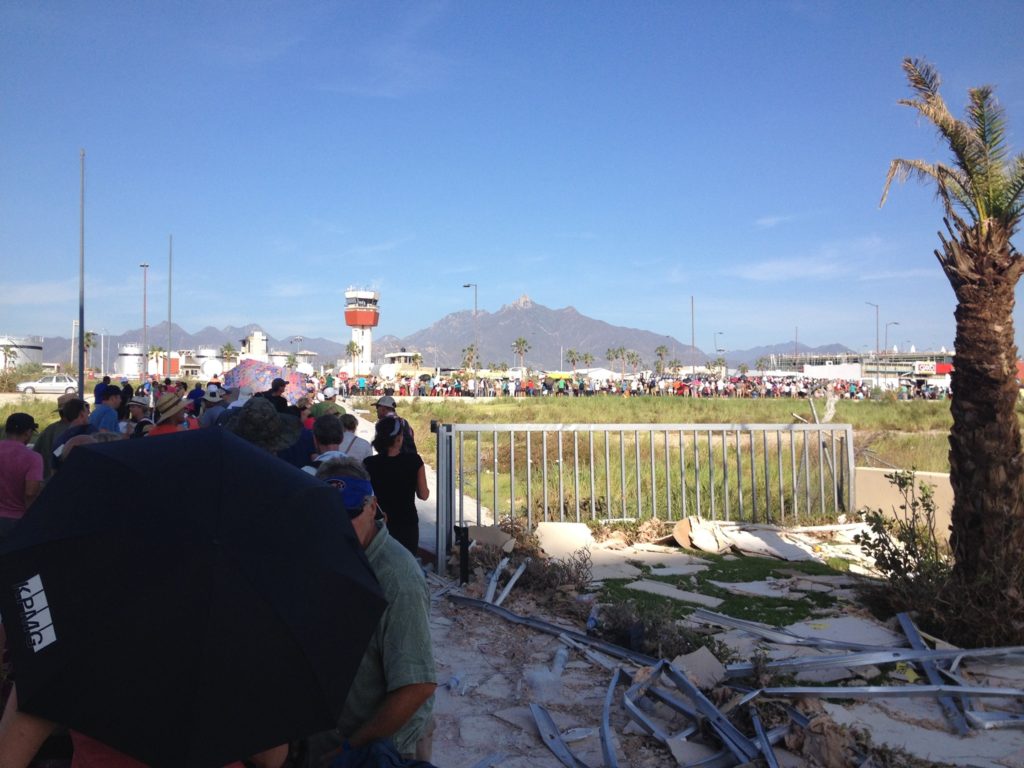
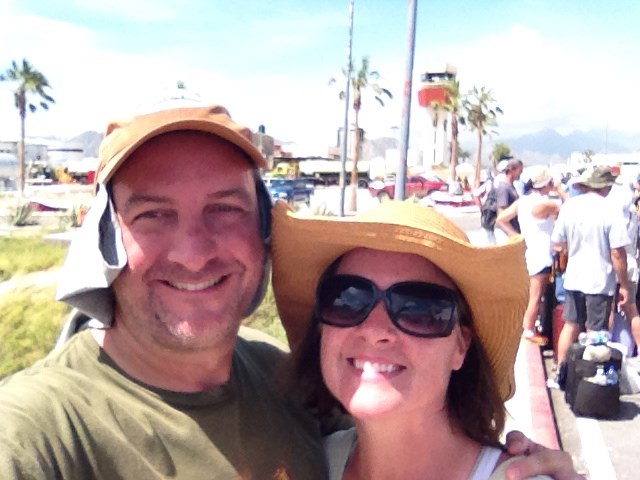
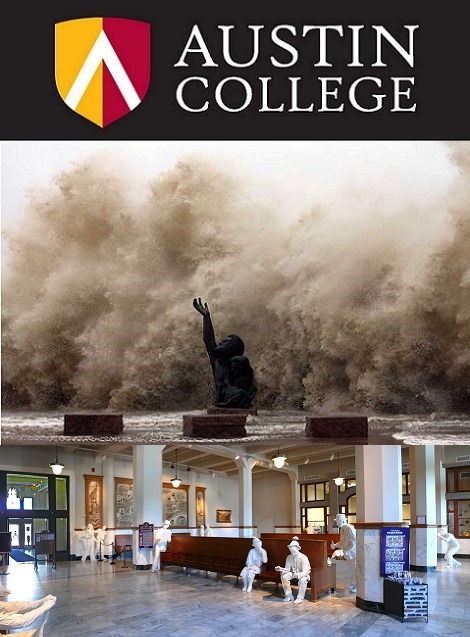
Austin College Kangaroos have lots of ties to Galveston. I’m not even familiar with most of them. But, I’m aware of a few.
Craig Kelso is a Galveston native; his trips to Austin College would start at the Sidney Sherman monument in Galveston, and would end in the city named for the man. Reid A. Nelson is a native islander with scary memories of Hurricane Alicia in 1983; Alicia was a big one, but nothing compared to 1900. Christina Powers Smith grew up in Galveston on Ball Street. The Austin College family that rode out the 1900 hurricane is the subject of the next Roo Tale; that family survived the storm in their home……on Ball Street. The family’s Ball Street house is still standing; once again, see the comments.
Ever heard of “The Statesman?” The Statesman is a beautiful beach house available for rental not far from Pleasure Pier in Galveston. It’s owned and maintained by AC Kangaroo Missy Alwais, who was in Sherman during my years. See the comments, and contact Missy to schedule your reservation. Oh yeah, The Statesman? Located one block from the former house of Isaac Cline. Cline’s house was completed destroyed in the 1900 Storm. He tragically lost family members to its wrath. But, he somehow survived.
Do you like seafood? It’s hard to beat “Shrimp & Stuff.” The restaurant has two locations, downtown & Avenue O. See the comments. And yup, “Shrimp & Stuff” is owned and operated by Austin College Kangaroo Jeff Antonelli. I’ve eaten at the Avenue O place, but not the new downtown location which recently opened. The downtown Shrimp & Stuff is located on Ball Street, the same street where the Austin College family rode out the Great Storm of 1900.
Former Austin College Trustee Lee Dean Ardell has a home on the island. She frequently attends First Presbyterian Church on the island. The father of the 1900 Austin College family that survived the storm was the pastor of First Presbyterian that year. He was also an Austin College Trustee. This next Roo Tale will be dedicated to Lee, Holly Mace Massingill, and all current and former Austin College Trustees.
And yes, the Parrish family has strong Galveston ties. Linda & Paul Parrish own a home on the island, and the family of Marc & Dianne visit regularly. Dianne loves the beach and Marc loves the Strand; we talk frequently about retiring on the island one day. Our kids have both played at the Galveston Train Station museum downtown; it’s the same station where the 1900 Austin Family arrived just before the Great Storm.
Working at UT System and having great UTMB colleagues and friends such as Sherri Wostal & Tony Edmond only strengthens the attraction. UTMB’s “Old Red” building survived the 1900 storm. The building’s official name is Ashbel Smith, named for the father of the University of Texas System and the academic who gave the first Austin College commencement address in 1853.
So get on down to Galveston. Check out the Sidney Sherman monument. Rent “The Statesman” from Missy Alwais. Get some seafood at Jeff Antonelli’s “Shrimp N Stuff.” Visit the Galveston Train Museum. Attend Lee Dean Ardell’s First Presbyterian Church.
And if a storm like 1900 is approaching, don’t ride it out. Get as close to Sherman, TX as possible.
Next week, it’s the Galveston Roo Tale:
Friday 8/30: Dedication
Saturday 8/31: Prologue: The song “Galveston”
Sunday 9/1: Chapter 1
Monday 9/2: Chapter 2
Tuesday 9/3: Chapter 3
Wednesday 9/4: Chapter 4
Thursday 9/5: Chapter 5
Friday 9/6: Chapter 6
Saturday 9/7: Chapter 7
Sunday 9/8: Epilogue: 119th Anniversary of the 1900 Storm
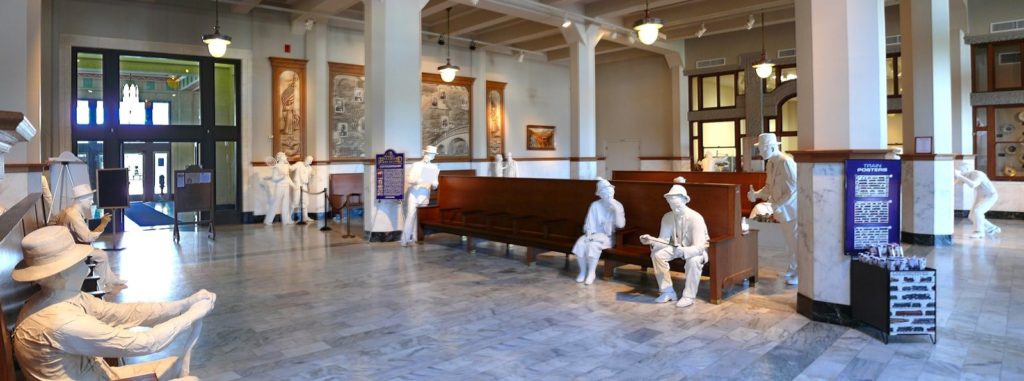
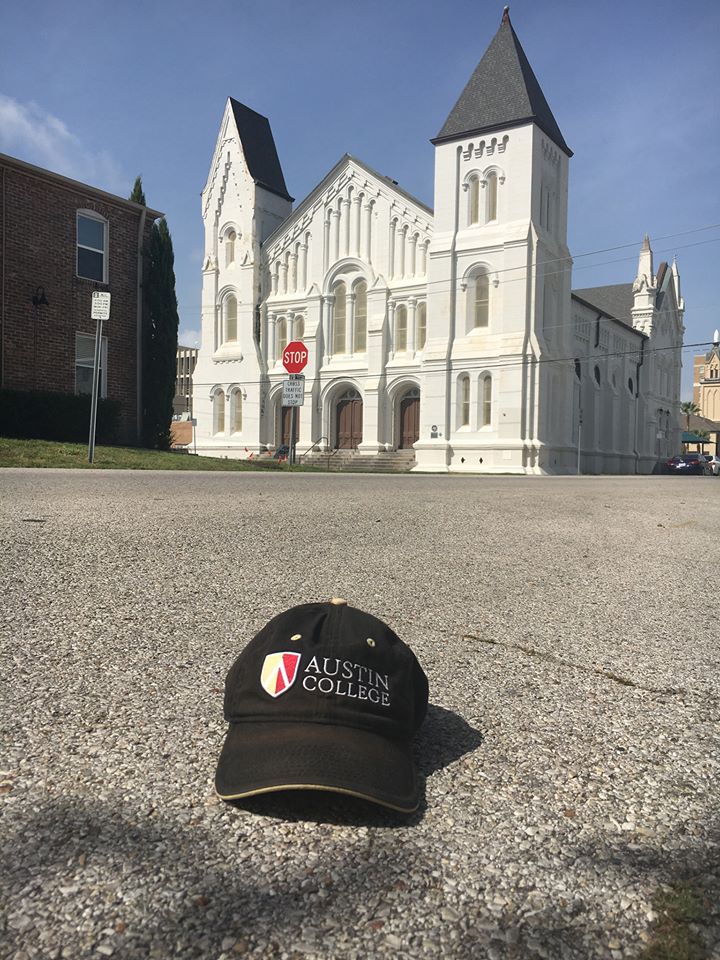
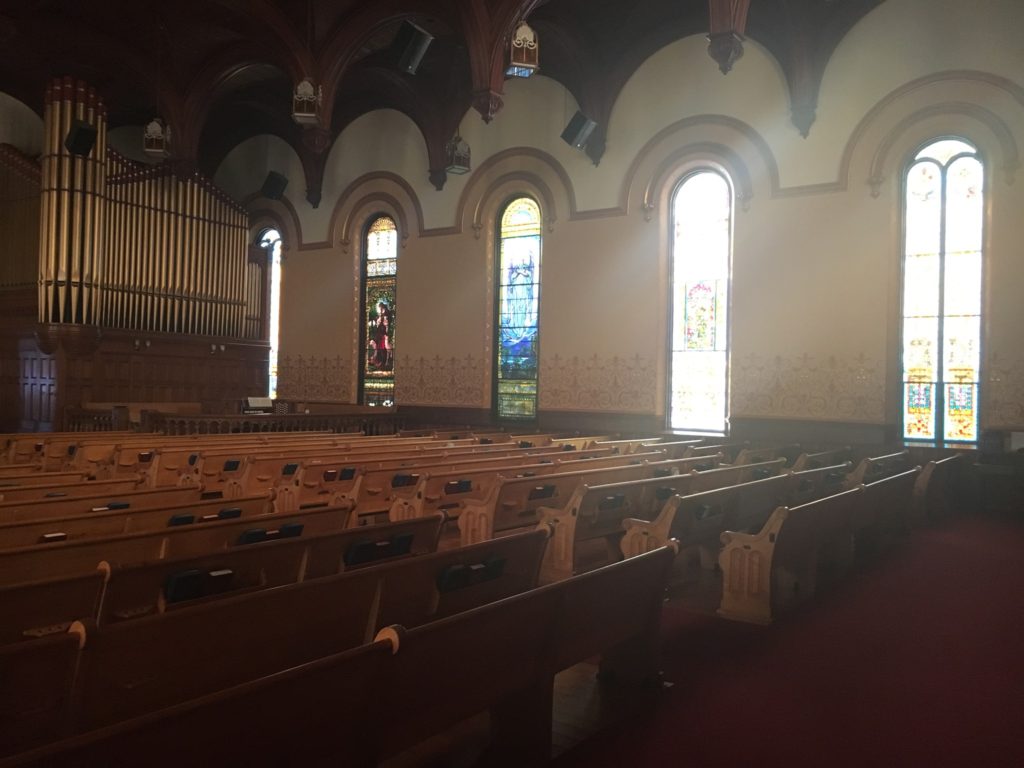
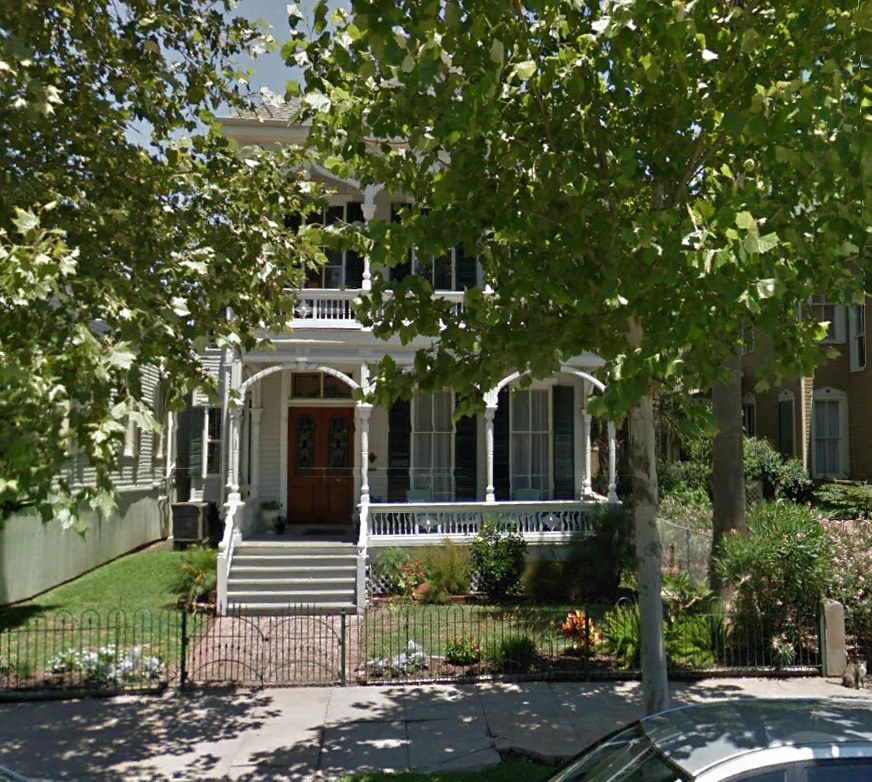
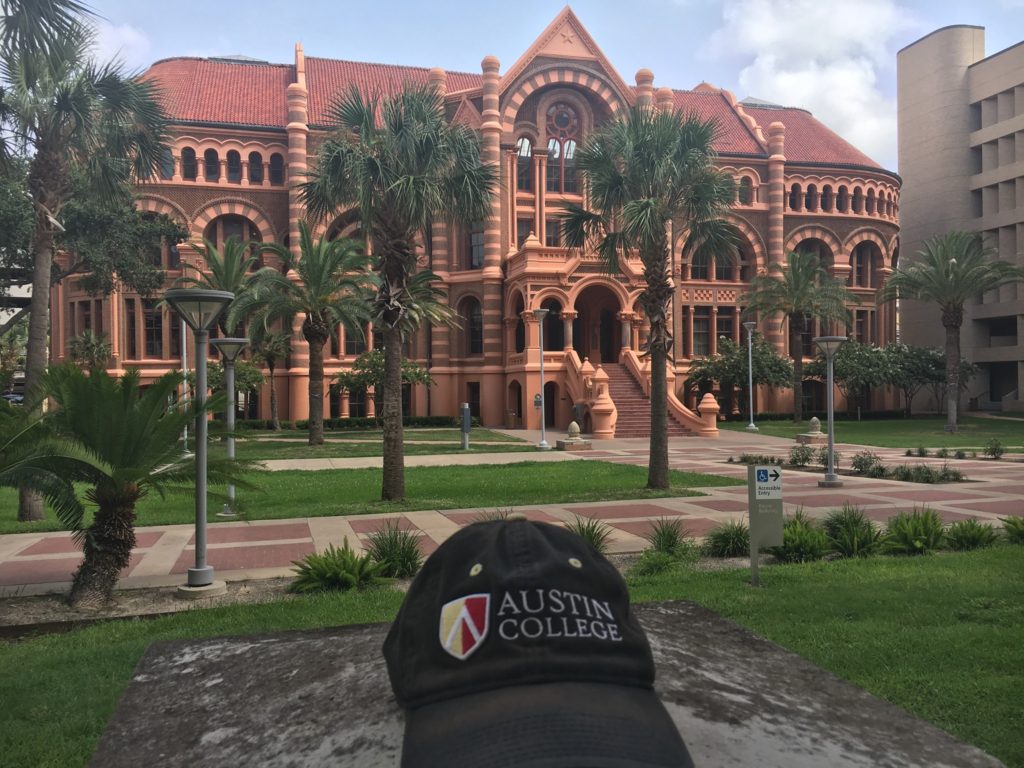
https://www.shrimpnstuff.com/?fbclid=IwAR2tLRSDBcFv77_xKL59KNnbVvG2NHJIKP27yp-rUd9jdNgBizzXZZ2LS4M
